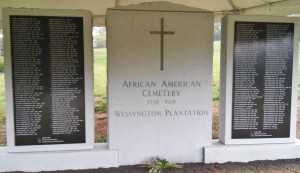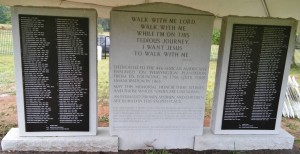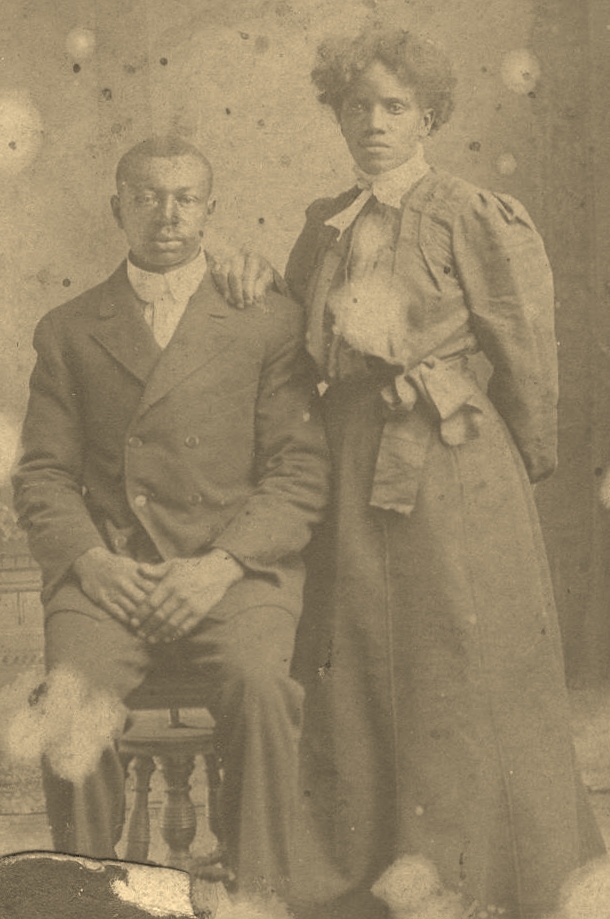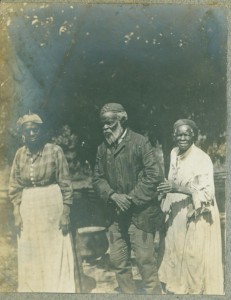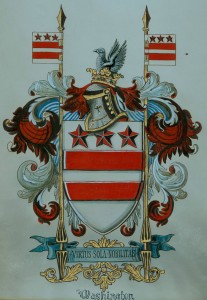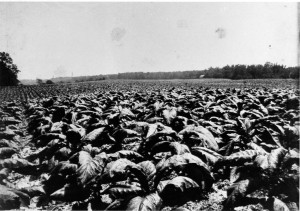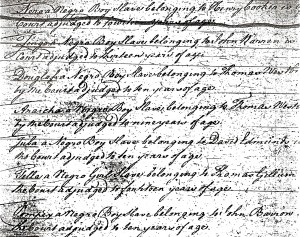Archive for the ‘Uncategorized’ Category
DEDICATION OF WESSYNGTON MEMORIAL MONUMENT
Monday, October 5th, 2015GARDNERS FIND FAMILY PHOTOS FROM THE 1800s
Tuesday, May 13th, 2014Recently some of the Gardner family descendants found some rare photographs of their ancestors and shared them with me. The 1870s photo featured here is of Daniel Gardner and his wife Melissa Boisseau Gardner. Daniel along with his parents, Aaron and Betty and two brothers George and Jackson were brought to Wessyngton Plantation in 1839 by George A. Washington. Daniel and Melissa married in Robertson County, Tennessee in 1866. On their marriage certificate Daniel is listed with the Washington surname, on most documents thereafter he is listed as Daniel Gardner. Daniel and Melissa are the ancestors of one of the largest families in Robertson County, Tennessee. Each year their descendants hold a family reunion, which started in 1935.
SLAVES AND SLAVEHOLDERS OF WESSYNGTON PLANTATION EXHIBIT TOUR
Tuesday, May 13th, 2014RECENTLY DISCOVERED PHOTOGRAPH FROM WESSYNGTON PLANTATION
Friday, November 29th, 2013
In preparation for the Tennessee State Museum exhibit, Slaves and Slaveholders of Wessyngton Plantation, descendants have been asked to locate Wessyngton artifacts, photographs, paintings and other memorabilia. A descendant of the owners of Wessyngton living in Nashville recently discovered this photograph in an album that belonged to his grandmother. The photograph was taken at Wessyngton in 1903, featuring Jenny Washington b. 1830, (wife of Allen Washington), Emanuel Washington 1824-1907 and his sister Susan Washington b. 1821. When the photo was taken there were only five former slaves still at Wessyngton of the senior generation, which also included Henny Washington 1839-1913 and Aggy Washington Terry, b.1824.
Wessyngton Plantation African American Cemetery 1796 to 1928
Thursday, November 29th, 2012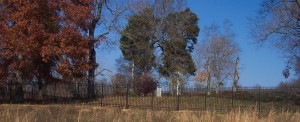
The African American Cemetery on Wessyngton Plantation was founded by Joseph Washington who came to Robertson County, Tennessee from Southampton County, Virginia in 1796. Joseph later returned to Virginia and brought African and African American slaves with him. The cemetery was used by the enslaved African American population of the plantation and their descendants from 1796 to 1928.
In 1995 a memorial monument at the African American Cemetery was erected by Mary Washington Holley, Thomas Blagden and Preston Frazer, direct descendants of Wessyngton’s founder Joseph Washington. It honors those buried there.
In 2012 a beautiful six-foot aluminum fence was erected to enclose and protect the cemetery. The fence adds charm and dignity to the cemetery. Special thanks go to Stanley Frazer Rose, a sixth generation descendant of Joseph Washington, for his generosity in funding this renovation.
The African American cemetery is located some distance from the Wessyngton mansion on a hill overlooking Caleb’s Creek. This is near where Joseph and his slaves first settled in 1796. The cemetery measures approximately 640 square feet and contains an estimated 200 graves. A geophysical survey using ground penetrating radar is planned to determine the actual number of graves in the cemetery. At that time, the original monument will be enlarged to honor all those who were buried in the cemetery. This monument will be funded in part by Mary Hotchkiss Gregg, Robina Gregg O’Rourke, Robert Etheridge Gregg, and Robert Hunnewell Gregg, sixth generation descendants of Joseph Washington.
Based on correspondence and plantation records from the Washington Family Papers collections, death certificates, oral history and eyewitnesses who attended burials at the cemetery, the following persons are known to be buried there:
Sampson Washington 1808 –1836
Caesar Washington 1826-before 1838
Elijah Washington 1823-before 1838
Matt Washington 1777-before 1838
Nicholas Washington 1822-before 1838
Noel Washington 1804-before 1838
Oscar Washington 1825-before1838
Peter Washington 1823-before 1838
Sam Washington 1770-before 1838
Sam Washington 1770-before 1838
Samuel Washington 1770-before 1838
Simon Washington 1783-1835-before 1838
Cherry Washington 1839-1839
Will Washington 1820-1841
Boyd Washington 1840-1846
Mariah Washington 1798-1846
Godfrey Washington 1787-1846-before 1850
Rosetta Washington 1827-1850
Camilla Lewis 1834-1852
Maria Washington 1853-1853
Wendy Washington 1853-1853
Westley Washington 1853-1853
Otho Lewis 1838-1854
Edward Washington 1834-before 1856
Al Washington ?-1838-before1856
Andrew Washington ?-1838-before 1856
Fowler Terry 1815-1838-before 1856
Simon Washington 1815-1838-before 1856
Toby Washington ?-1838-before 1856
Tony White 1820-1838-before 1856
Westley Washington 1822-1838-before 1856
Daniel Washington 1808-1841-before 1856
Wallis Washington 1822-1841-before 1856
Anthony Washington 1823-1843-before 1856
Archer Washington 1824-1843-before1856
Charles Washington 1809-1843-before 1856
George Lewis 1785-1843-before 1856
Jim Washington 1801-1844-before 1856
Aleck Washington 1795-1846-before 1856
Norfleet Washington 1846-before 1856
Tom Washington 1783-1846-before 1856
Gabriel Washington 1819-1850-before 1856
Dempry Washington 1837-1856
Ned Washington 1844-1856
Silvah Washington 1817-1823-before 1860
Charity Washington 1828-before 1860
Martha Ann Washington 1833-before 1860
Martha Washington 1835-before 1860
Sarah Washington 1840-before 1860
Arry Leavell Washington 1805-1841-before 1860
Sally Washington 1816-1829-before 1860
Mira Washington 1829-1842-before 1860
Sylvia Washington 1806-1842-before1860
Bena Washington 1770?-1844-before 1860
Tom Washington 1782-1846-before 1850
Easter Washington 1784-1850-before 1860
Henny Jackson Smith 1790-1850-before 1860
Jenny Washington 1760-1850-before1860
Unknown male 1785-1850-before 1860
Willie Washington 1820-1850-before 1860
Angelina Cheatham Washington 1814-1851-before 1860
Millie Washington 1851-before 1860
Allen Washington 1813-1856-before 1860
Mose Terry 1810-1856-before 1860
Westley Washington 1830-1856-before 1860
Hannah Washington 1780-1801-before 1860
Juda Washington 1775-1801-before 1860
Nanny Washington 1802-1804-before 1860
Rhoda Washington 1814-1819-before 1860
Fanny Washington 1815-1831-before 1860
Peggy Lewis 1795-1843-before 1860
Lettuce Washington 1857-before1860
Green Cheatham 1817-1860
Jack Washington 1849-1860
Marian Lewis ?-1843-1860
Temperance Washington 1795-1861
Amanda Washington 1837-1863
Aaron Gardner 1804-1860-before 1865
Esther Washington 1775-1860-before 1865
Jenny Washington 1785-1860-before 1865
Sarah Washington 1810-before 1865
Jack Washington 1859-1865
Moses Lewis 1857-1866
Vina Washington 1843-1869
America Washington 1815-1870-before 1880
Humphrey Washington 1797-1870-before 1880
Jenny Blow Washington 1792-1870-before 1880
Cornelia Washington 1859-1882
Axum Washington 1808-1880-before 1890
Britain Washington 1800-1880-before 1890
Hannah Washington 1808-1880-before 1890
Prudence Washington 1819-1893
Allen Washington 1825-1890-before 1895
Emanuel Washington 1824-1907
Jenny Washington 1830-1900-before 1910
Winnie Washington Long Biggers 1860-1900-before 1910
Henny Washington 1839-1913
Sarah Washington Cheatham 1810-1914
Hezekiah Tom Washington 1850-1918
Henry Drake 1868-1928
Gardner Family to Celebrate 77th Annual Family Reunion
Tuesday, July 26th, 2011On August 20th through 21st the Gardner family will celebrate their 77th annual family reunion in Springfield, Tennessee. The Gardners have held a reunion on the same date each year since 1935. The Gardner family is one of the largest African American families in Robertson County, Tennessee. I am currently working on a family tree for the reunion which includes nearly 800 direct descendants from Aaron and Betty Gardner. Aaron and Betty along with their three sons, Daniel, George and Jackson were enslaved on the Wessyngton Plantation from 1839 to 1865. The reunion will include a tour of the Wessyngton Plantation.
Terry Family to Celebrate Family Reunion
Tuesday, July 26th, 2011On August 13th the Terry family will celebrate their bi-annual family reunion in Springfield, Tennessee. The reunion festivities will include a tour of Wessyngton Plantation. Hundreds of descendants across the country will attend the reunion. The Terry family is one of the largest families from Wessyngton with over 1,000 descendants, spanning eleven generations from their first ancestors, Dick Terry and Aggie Washington Terry.
Wessyngton Plantation Named in Honor of Washingtons’ Ancestral Home
Sunday, October 11th, 2009The Washingtons trace their ancestry back to William de Hertburn in twelfth-century England where their family owned a manor estate called Wessyngton─the Norman spelling of Washington. William de Hertburn changed his name to William de Wessyngton. The first Washington to come to America in Joseph Washington’s line was John Washington, who immigrated to Surry County, Virginia, in 1658. One of John’s cousins also named John immigrated to Westmoreland County, Virginia, in 1656. This John Washington was the great-grandfather of President George Washington. Joseph Washington came to Robertson County, Tennessee in 1796 and established Wessyngton Plantation, which he named in honor of his ancestral home.
Slave Labor on Southern Plantations
Wednesday, October 7th, 2009
Slaves toiled endlessly, clearing land, plowing fields, raising livestock, erecting buildings, and planting crops to transform frontier landscapes into lavish plantations.
The enslaved population on Wessyngton Plantation primarily produced tobacco, which was very labor intensive. In 1860, 250,000 pounds of tobacco was produced on Wessyngton making it the largest producer of tobacco in the United States and the second largest in the world.
Colonial Documents Reveal African Roots
Friday, July 24th, 2009Nero a Negro boy slave belonging to Henry Cooker is by the court adjudged to fourteen years of age.
Zingo a Negro boy slave belonging to John Warren by the court adjudged to thirteen years of age.
Douglas a Negro boy slave belonging to Thomas Westbrooks by the court adjudged to ten years of age.
Anarcha a Negro boy slave belonging to Thomas Westbrooks by the court adjudged to nine years of age.
Juba a Negro boy slave belonging to David Edmunds by the court adjudged to ten years of age.
Tilla a Negro girl belonging to Thomas Gillum the court adjudged to fourteen years of age.
Pompey a Negro boy slave belonging to John Barrow the court adjudged to ten years of age.
During the Colonial period, slave owners were required to pay taxes on their slaves from ages twelve to fifty years old. When Africans were brought to the colonies and it was evident that they were adults they were simply added to tax rolls called tithables. When small children and teenagers arrived from Africa and their ages were uncertain, the slave owners would have to take them into court and a judge would assign an age for the slave, which was then recorded in minute or court order books. Most of the slaves were assigned English names, although some retained their true African names. Some of the court orders also list the names of the ships the Africans arrived in and the dates of arrival. Many of these individuals can be traced in later documents such as tax records, wills, and estate settlements. These records can prove to be a genealogical goldmine for African American researchers.
